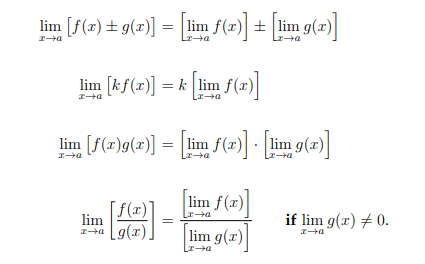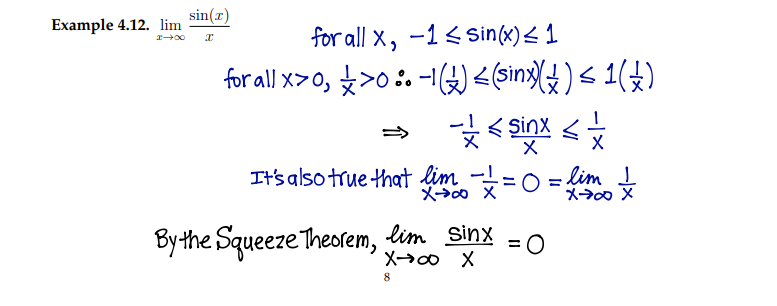Secants, Tangents, Limits, Continuity
1/16
There's no tags or description
Looks like no tags are added yet.
Name | Mastery | Learn | Test | Matching | Spaced |
|---|
No study sessions yet.
17 Terms
secant
average rate of change
f(b) - f(a) / b - a
tangent
instantaneous rate of change
slope at a specific pt of graph
f(a+h) - f(a)/h (as h approaches 0, therefore a very tiny interval)
a real limit only exists if
it approaches a REAL, UNIQUE NUMBER
both sides of value approaches the same number (right lim = left lim)
even tho limits at infinity and negative infinity technically DNE, we still use them to get info about graph
get limits for restricted x values by
testing how values very near the restricted value behave
from both left and right side
if it approaches a real number, there is likely a hole at the restricted value
and factors on top and bottom can cancel out
if a restricted value of a fn has infinity limits, that means that graphically, there is a
vertical asymptote at the restricted lim (evaluated on both sides)
ceiling fn
output = the input rounded up
ex: input = 3.01, output = 4
input = 3, output = 3
input = 2.8, output = 3
input = 2.01, output = 3
the limit at 3 would not exist even though f(3) exists since the left and right side do not approach the same value
ways to evaluate limits
numerically (plug in nearby values)
graphically (studying the graph of fn)
using limit laws
using direct substitution (if the value is in the domain of the fn)
using algebraic tricks (cancelling out factors/manipulating fn to obtain a diff fn)
limit laws

reasons why f could be discon at x = a
a is not in the domain of f
limit of x→a DNE
limit of x→a exists but does not equal f(a)
on graphs, discontinuities happen at
holes, jumps, vertical asymptotes
if f and g are continuous at a, then the following functions are also continuous at a

the given functions are continuous at every real number IN THEIR DOMAINS
poly
rat fn
root fn
trig fn
inv trig fn
exp fn
log fn
if you are taking the lim of a composition of fns at x → a, then you can move the lim to the inner fn PROVIDED THAT:
the outer fn is continuous
you can check that there’s a root in a certain interval PROVIDED THAT the interval is continuous on all x-vals in the interval by using INTERMEDIATE VALUE THEOREM
EX. on interval [1,2]
f(1) = 3
f(2) = -10
therefore, the fn must cross the x-axis at some pt meaning there is a root
to determine horizontal asymptotes
take limit of fn at x → infy and x → -infy
factor out the x with the highest degree
directly substitute in the infy (NOTE: 1/infy is approx 0)

squeeze theorem example

taking infy limit for absolute value fns
if x → infy, then |x| = x
if x → -infy, then |x| = -x